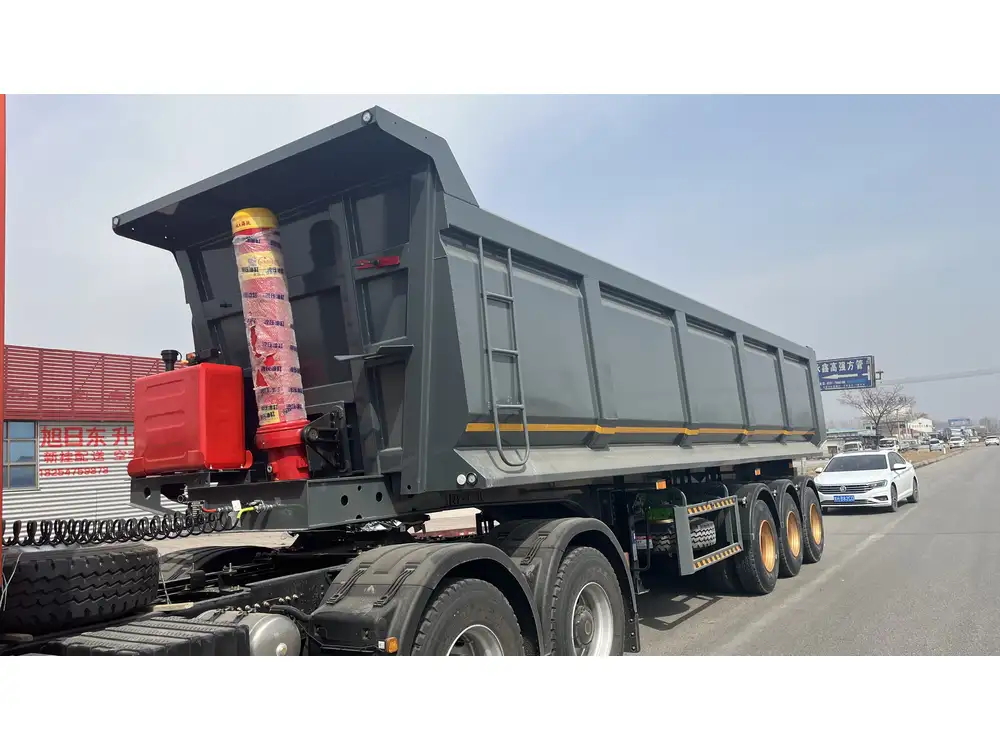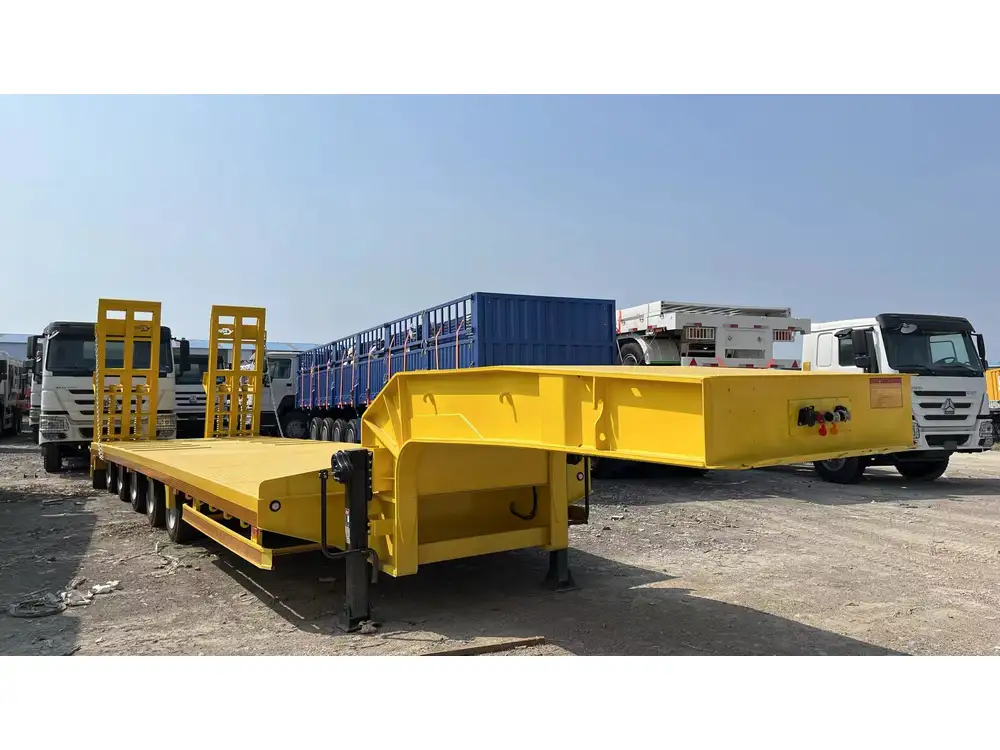When it comes to maximizing the utility of your 2500 pickup truck, selecting the right dump trailer size is paramount. The correct trailer can elevate your hauling capabilities, whether for personal use, landscaping endeavors, or larger construction projects. This guide delves into the nuances of determining the appropriate dump trailer size compatible with a 2500 pickup, taking into account essential factors such as payload capacity, trailer specifications, and weight distribution.
Table of Contents
- Introduction to Dump Trailers
- Defining Your Truck’s Specifications
- Understanding Capacity and Weight Limits
- 3.1 GVWR vs. Curb Weight
- 3.2 Payload Capacity Explained
- Ideal Dump Trailer Sizes for a 2500 Pickup
- 4.1 10-12 Foot Dump Trailers
- 4.2 14-16 Foot Dump Trailers
- 4.3 Specialty Dump Trailers
- Common Use Cases for Dump Trailers
- Safety Considerations: Weight Distribution and Towing
- Frequently Asked Questions
- Conclusion
1. Introduction to Dump Trailers
Dump trailers are an invaluable asset for any individual or contractor needing to transport and dispose of loose materials like sand, gravel, or construction debris. Unlike standard utility trailers, dump trailers offer the functionality of lifting and unloading cargo with ease, often facilitated by hydraulic systems. This operation is critical in enhancing efficiency and reducing manual labor, which can harm worker productivity.

2. Defining Your Truck’s Specifications
Before diving into the specifics of dump trailer sizes, understanding your 2500 pickup’s specifications is fundamental. Trucks in the 2500 classification typically exhibit a robust frame and elevated towing capabilities compared to light-duty pickups. However, variances can occur due to model years, engine types, and trailer braking options.
Key Specifications to Review:
- Curb Weight: This is the weight of the truck with all standard equipment, fluids, and a full tank of gas.
- Gross Vehicle Weight Rating (GVWR): This rating indicates the total weight the vehicle can safely carry, including the truck’s weight, any passengers, cargo, and the trailer.
3. Understanding Capacity and Weight Limits
To optimize the performance of your 2500 pickup with a dump trailer, it’s crucial to have a firm grasp on capacity limits.

3.1 GVWR vs. Curb Weight
Understanding the distinction between GVWR and curb weight is vital for ensuring safety and compliance while towing. The GVWR is established by the manufacturer and reflects the maximum safe weight limit. Exceeding this limit can result in significant safety hazards and legal repercussions.
| Specification | Definition |
|---|---|
| Curb Weight | The weight of the vehicle without any added cargo, passengers, or cargo. |
| GVWR | The maximum weight a vehicle can safely handle, including its own weight and all additional loads. |
3.2 Payload Capacity Explained
The payload capacity is calculated by subtracting the curb weight from the GVWR. This figure represents how much additional weight (including the trailer’s tongue weight) your truck can safely carry.
Example Calculation:
- GVWR: 10,000 lbs
- Curb Weight: 6,000 lbs
- Payload Capacity: 10,000 lbs – 6,000 lbs = 4,000 lbs
This means your truck can safely carry 4,000 lbs of additional weight, including that from the dump trailer.
4. Ideal Dump Trailer Sizes for a 2500 Pickup
Selecting the appropriate size dump trailer depends largely on your truck’s payload capacity and the type of work you’ll be doing. Here’s a breakdown of commonly recommended sizes for a 2500 pickup:

4.1 10-12 Foot Dump Trailers
Ideal for homeowners and smaller jobs, this size fits well within the capacity limits of most 2500 pickups. Typically able to carry around 5,000-8,000 lbs, a 10-12 foot dump trailer is versatile for landscaping, debris removal, and small-scale construction tasks.
Features:
- Moderate weight and manageable dimensions
- Sufficient for everyday hauling needs
- Generally lighter than larger trailers, ensuring compliance with payload limits
4.2 14-16 Foot Dump Trailers
For heavier jobs and larger payloads, a 14-16 foot dump trailer is a strong contender. These trailers often range from a 7,000 to 11,000 lbs capacity, making them suitable for commercial landscaping, larger debris disposal, and construction projects.
Considerations:
- Ensure your truck’s payload capabilities can support the combined weight of the trailer and cargo.
- More extensive loading capacity might necessitate reinforcement on the truck’s hitch and frame.
4.3 Specialty Dump Trailers
In some cases, unique projects may require specialized dump trailers, such as those designed for specific boulder hauling or specialized construction tasks. These trailers can be heavier and typically demand a careful assessment of weight limits.

5. Common Use Cases for Dump Trailers
Dump trailers serve multiple purposes across a variety of industries and applications. Recognizing your specific needs can dictate the size and type of trailer best suited for your 2500 pickup.
Use Case Examples
- Landscaping: Ideal for transporting soil, mulch, or other landscape materials.
- Construction: Effective for hauling debris, heavy materials, and equipment.
- Agricultural: Suitable for moving feed, fertilizer, or farm waste.
- Home Improvement Projects: Convenient for hauling renovation debris, gravel, and large household items.
6. Safety Considerations: Weight Distribution and Towing
Safety cannot be overstated when it comes to towing a dump trailer. Weight distribution plays a vital role in the stability and operation of your truck and trailer combination.

Tips for Safe Towing
- Ensure Proper Weight Distribution: The tongue weight (typically 10-15% of the trailer’s total weight) must be adequately distributed to prevent swaying or instability.
- Utilize a Weight Distribution Hitch: Investing in a weight distribution hitch can significantly enhance towing stability and safety.
- Regularly Inspect Your Trailer: Check for any maintenance issues like tire inflation, brakes, and structural integrity before setting out.
7. Frequently Asked Questions
What Type of Braking System Should I Use?
For trailers over a certain weight, it is advisable to use a brake system that synchronizes with your truck’s braking capabilities. Electric brakes offer better responsiveness when on steep inclines.

Can I Use a Bigger Trailer than Recommended?
While technically it may be possible, overload risks may lead to severe accidents and legal penalties. Always adhere to the guidelines set out by your truck’s manufacturer.
Are There Weight Limits on Dump Trailers?
Yes, each dump trailer has a specified weight limit which should never be exceeded, as this can cause structural damage to the trailer and create hazardous driving conditions.
8. Conclusion
Selecting the right size of a dump trailer for your 2500 pickup truck is a process requiring careful consideration of weight limits, use cases, and safety recommendations. By understanding your truck’s specifications and assessing the weight capacities of various trailer sizes, you can optimize your hauling capabilities effectively. Whatever your hauling needs may be, ensuring that you match the appropriate trailer size with your pickup will enhance performance, increase productivity, and promote safety on the road.
In essence, a well-matched dump trailer and pickup not only fulfill practical requirements but also pave the way for seamless operation across various applications, making them indispensable tools for any serious contractor or homeowner.



